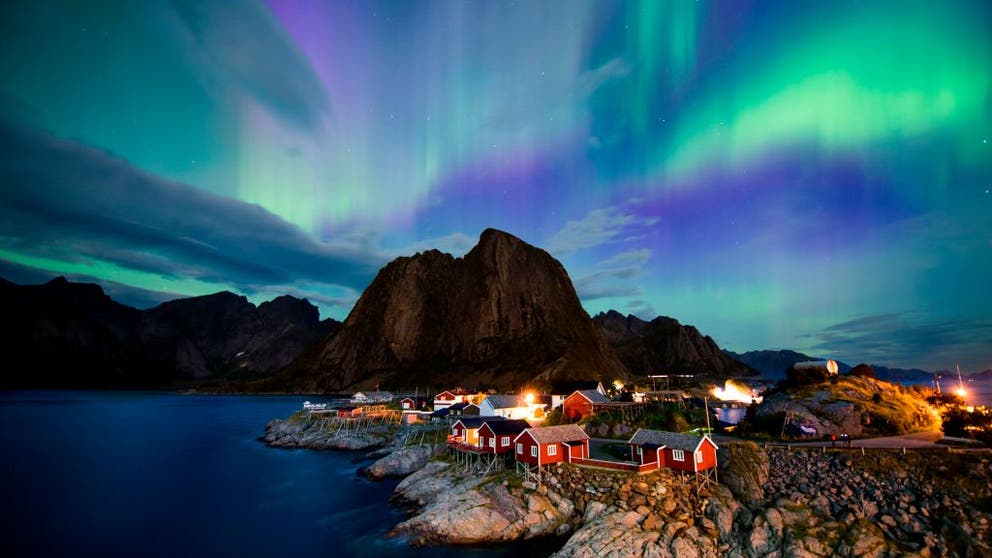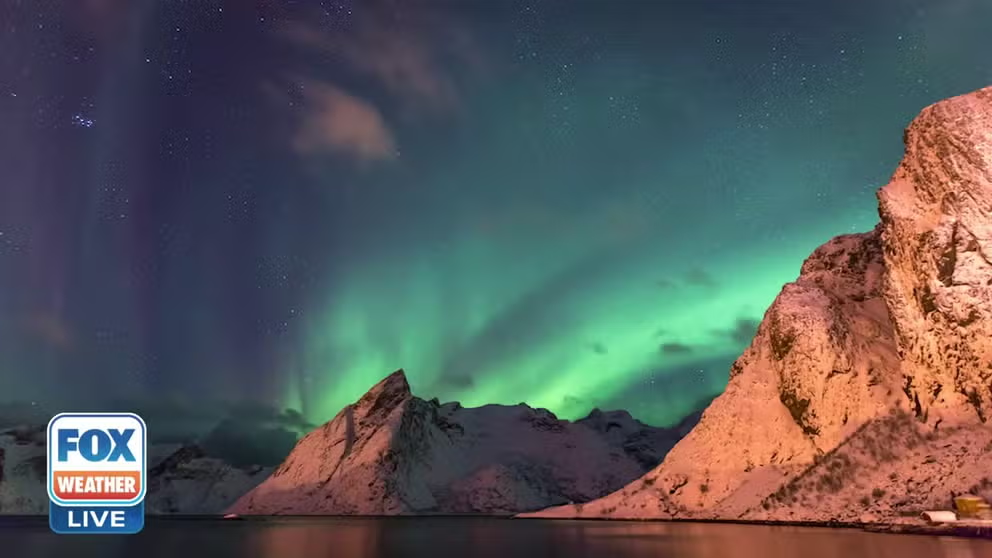7 things to know about the Northern Lights
The Northern Lights are one of the most stunning displays the planet can provide. Here are 7 facts about what they are and how they form:
7 Facts about the Northern Lights
Seven facts about how the Northern Lights form and how best to spot them
The Northern Lights are one of the most stunning displays the planet can provide. Here are 7 facts about what they are and how they form:
1) They're caused by solar activity
Vivid Northern Lights displays usually follow a few days after solar events known as coronal mass ejections or solar flares. The flares bring a barrage of electrons that interact with oxygen and nitrogen in Earth's magnetic field that surrounds the outside of our planet.
"The production of the colors is very similar to what you see in a neon sign," says Don Hampton, a researcher at the University of Alaska, Fairbanks. "It's basically just an electrical current."
As the electrons hit the oxygen and nitrogen molecules, it "dumps in a little energy," Hampton says. "And then (the molecules) relax back down to ground state. When they do that, they release a little bit of light."
That light is what we see as the beautiful aurora.
2) The colors of the lights vary by type of gas
Oxygen molecules give off a green or yellow glow when they are excited, or sometimes can give off a bit of a red hue, according to NASA.
Meanwhile, nitrogen will give off blue hues when hit by solar energy.
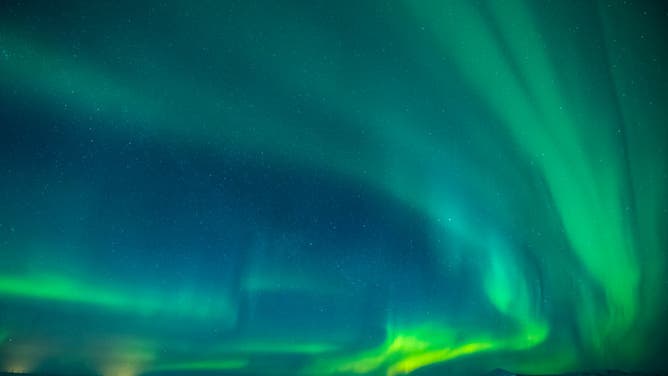
Aurora Borealis spectacular view of the Northern Lights in the sky over Hotel Ranga tourist resort at Hella in South Iceland.
(Tim Graham / Getty Images)
3) The northern latitudes get the most frequent shows, but sometimes they spread south
Auroras are best seen in the polar regions such as Alaska, northern Canada and Scandinavia as solar activity gravitates to the polar regions.
"Fairbanks really is the best place in the U.S. to go look at aurora," Hampton said. "Almost any night, if it's clear, you'll be able to see some activity; it's very rare that we see nothing. Getting (the aurora) right overhead is about half the time."
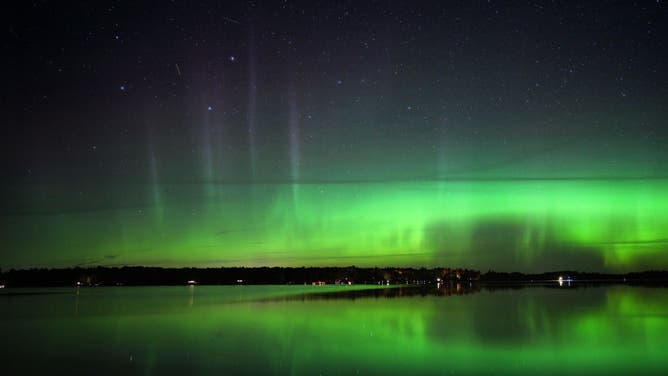
CANYON, MN - AUGUST 30: Northern lights are seen in the night sky near Canyon, Minnesota on Friday, August 30, 2019.
(Brian Peterson/Star Tribune)
But the oval of aurora activity expands and contracts depending on how much energy comes in from Sun's solar wind. If a solar flare hits the planet, the aurora sightings will expand south.
"And so people in the northern tier states, say like Minnesota or North Dakota or along the northern border, may well see some glow in the sky off to the north, or maybe even closer to overhead," Hampton said.
You can gauge the potential southern migration of the aurora by finding your geomagnetic latitude and knowing the forecasted "Kp" index -- a 1-9 scale measuring geomagnetic storm intensity.
MORE INFO: Current kP Index | Forecasted kP Index
4) Extreme solar flares can bring Northern Light displays into the southern states
More intense solar flares can bring aurora sightings much farther south than typically observed, reaching California, Nevada and Texas.
The strongest solar flare ever recorded, known as the "Carrington Event" in 1859, was so intense that the Northern Lights were spotted in Cuba and Hawaii, according to NASA.
5) There's a new "Northern Light," and its name is "STEVE"
Researchers have recently named a newly-discovered variance of the aurora as "STEVE" – which now stands for Strong Thermal Emission Velocity Enhancement, but originally was given the generic name "Steve" by the observers in Western Canada who discovered the new aurora type, according to Space.com
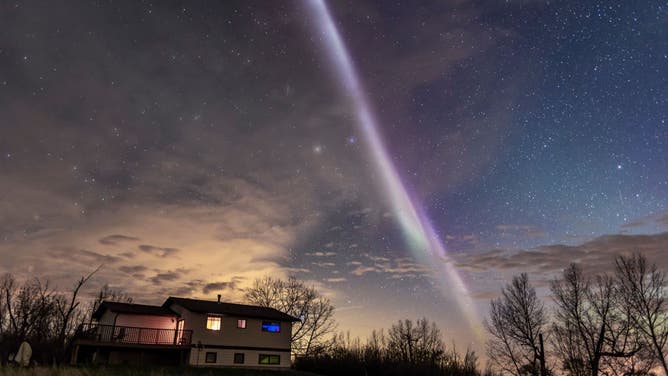
The unusual STEVE auroral arc over a house in southern Alberta, on May 6, 2018.
(VW Pics/Universal Images Group)
6) Want to see the Northern Lights? Get away from city lights
Light pollution from nearby urban areas will make it difficult to spot the aurora.
What causes the Northern Lights?
When solar activity ramps up, so do the chances of seeing a dazzling display of the Northern Lights.
"When (the aurora) are fairly dim, it's harder for your eyes to see the colors and distinguish between city lights," Hampton said. "You want to be out of town a couple of miles. If you can be in a farm field or something, look off to the north with fewer lights."
TIPS FOR SPOTTING THE NORTHERN LIGHTS
You'll also want to make sure the sun is well below the horizon -- think 11 p.m. to 3 a.m. -- so the skies are as dark as they can be, and hope a bright moon isn't around to blast the sky with competing for light.
7) The Northern Lights will look better on camera
If the aurora display is relatively dim, it may only appear to your eyes as a faint green or milky haze, depending on the strength of the show. If the storm really gets going, more dazzling greens and purples may be seen with just your eyes, provided they've adjusted to the darkness.
You can bring a camera, set it on long exposure and keep it steady, and the lights will pop out. Just remember, cameras are much better than human eyes at picking up the color at night, so photos you see of the aurora on social media may not match what you might see in the same spot.
